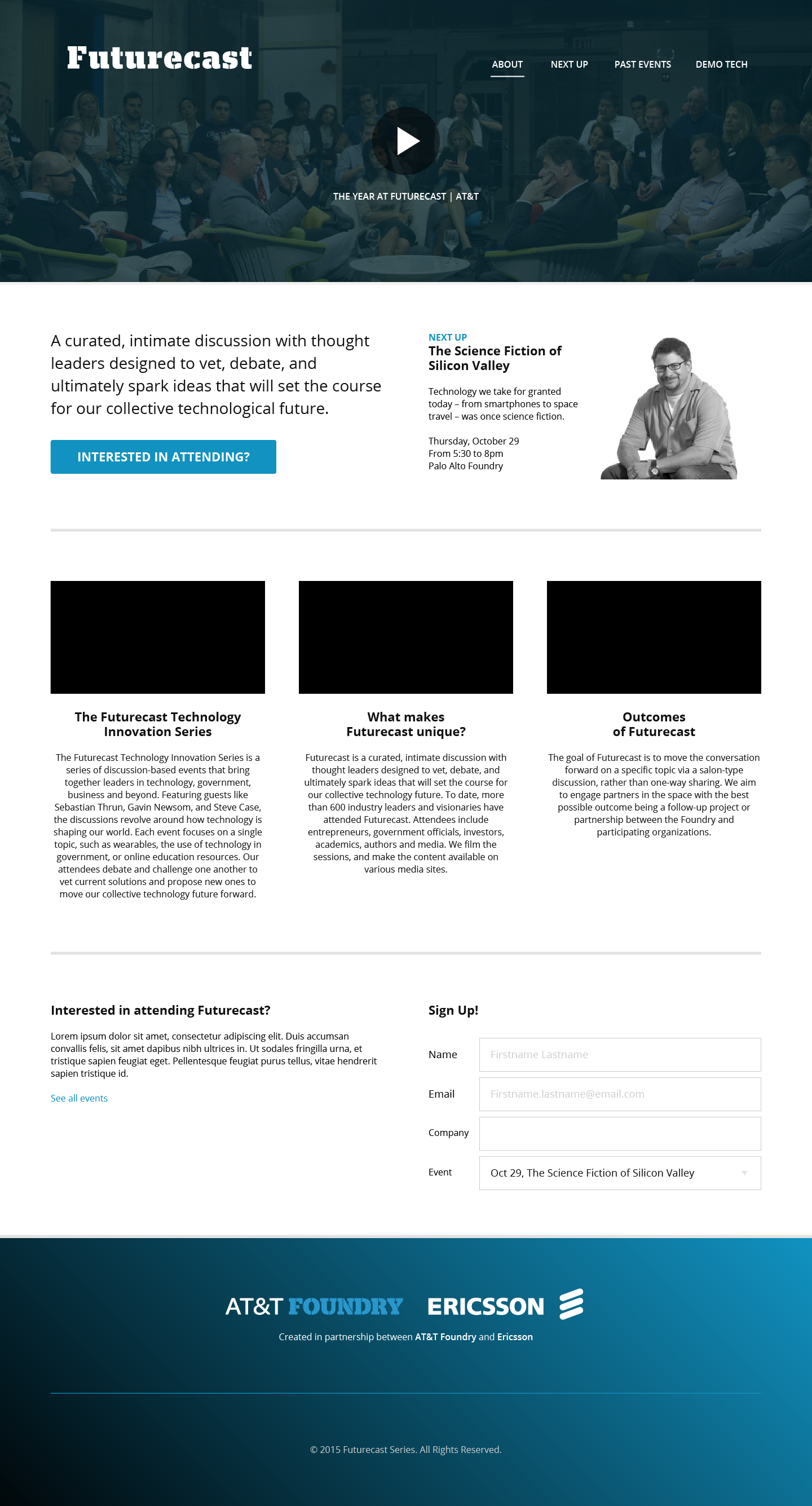Client
AT&T Foundry Palo Alto
When
2015
Team
Lead UX Designer, External Visual Design Consultancy
Role
Lead User Experience Designer
Client
AT&T Foundry Palo Alto
When
2015
Team
Lead UX Designer, External Visual Design Consultancy
Role
Lead User Experience Designer
The Futurecast Series is a thought leadership series by AT&T Foundry and Ericsson. With a deconstructed panel format, Futurecast brings together leaders in technology, government, business and beyond (like Sebastian Thrun, Gavin Newsom, and Steve Case) to engage in vibrant discussions with an intimate, curated audience.
Since its inception in 2013, the series had been growing year over year. However, the branding and processes had not grown in turn. I noticed a unique opportunity to create a unified face for our growing event.
When I joined the AT&T Foundry in 2015, I led the charter to refresh our branded collateral, operational processes, and growth strategies for the Futurecast Series.
“Futurecast is a gathering of thought leaders designed to vet, debate and ultimately spark ideas that will set the course for our collective technology future. We invite the best and brightest around a particular topic to participate in a curated, intimate discussion with fellow experts in the field. It is a fantastic opportunity to move conversations forward, challenge orthodoxy, and generally define the future.”
Our Futurecast brand was all over the place. There were inconsistencies throughout the material (see below).
And if the off-brand visuals were not enough, it was also not easy to engage with our end users and our processes were not streamlined to easily create collateral for future events.
We had a successful event with engaged followers, but we were not set up to scale as we continued along our upward trajectory.

I started us off with an overhaul of the branded collateral, operational processes, and growth strategies.
For the collateral, I brought in an external visual design consultancy. I laid out our requirements, expected deliverables, and goals (low-resolution mockups) and kicked them off. Soon after, we had new social media images, video screens, digital posters, and email templates. In the meantime, I dove into updating the website. I updated the information architecture to encourage users to engage with past content and clearly see upcoming events.
With the website as a key touchpoint for our users, I wanted to improve our internal processes for keeping information as updated as possible. I developed easy to use standards in the form of templates to streamline the process of creating archives for past events.
Before each event, we host startup technology demonstrations. I created a website funnel for demo requests to offer an open door for interested companies to approach us.
To harness our user engagement and amplify it, we began live streaming our events via Periscope and Facebook to open up the events to a wider audience, while maintaining the intimate, curated atmosphere that makes Futurecast so special.
We added in analytics and tracking to better understand our user behavior.
I also shifted our hashtag use from a unique hashtag for each event to a single #futurecastseries for all our events.
We launched the new branding at CES in January 2016 and have been using it successfully every since. Even as the event has been handed over from teammate to teammate, my improved collateral, processes, and strategies have persisted, freeing up valuable time for teammates to start other projects, like the Futurist Reports, which were created in collaboration with RocketSpace.